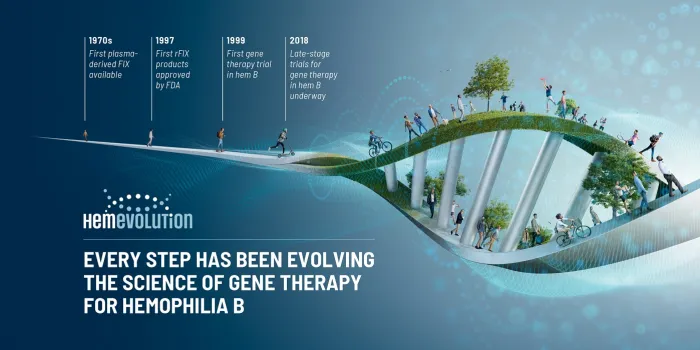Over 10,000 individuals worldwide have been treated with various gene therapy products. Gene therapy is a medical treatment that uses DNA to treat a genetic condition, and it is transforming the treatment landscape in formerly incurable conditions where it has been studied.
The history of gene therapy begins with DNA, a set of step-by-step instructions that cells use to make proteins we need to survive and live healthily. But there are times when the DNA we have is altered and prevents our cells from making fully functional proteins, which can undermine our health. Gene therapy is an innovative, transformative treatment approach that aims to address these underlying genetic mutations to treat or cure a condition.
The first attempts at gene therapy began in 1970. Since then, the science advanced rapidly and in 2007, scientists identified effective vehicles for delivering new genes into cells. Designated as “vectors,” these vehicles, commonly made from adeno-associated viruses (AAVs), are inactivated viral shells that excel at getting into specific targeted cells, which makes them ideal for situations where a specific tissue or organ is the cause of a disease. Currently, there are more than 250 AAV-based clinical trials underway across a variety of conditions.
In the case of hemophilia B, the liver cells, which normally make the blood-clotting proteins needed to stop bleeding, contain a mutation in the F9 gene that results in insufficient levels of Factor IX (FIX) being produced. Gene therapy offers great promise in replacing the single altered gene to allow the body to generate its own stable levels of FIX in the liver. The first gene therapy trial for hemophilia B was initiated in 1999 and by 2018 a number of late-stage clinical trials utilizing AAV-based gene therapy for hemophilia B were underway. In clinical trials, AAV-based gene therapy in hemophilia B has produced stable FIX activity for over eight years of follow-up with sustained decreases in annualized bleed rate (ABR) and FIX replacement therapy. Clinical trials for other gene therapies are still ongoing and currently no hemophilia B gene therapy has received FDA approval.
In 2020, CSL Behring acquired global rights to commercialize the investigational AAV-based gene therapy etranacogene dezaparvovoec, also known as EtranaDez, which is in development in the ongoing, pivotal HOPE-B clinical study. The HOPE-B phase 3 pivotal trial enrolled 54 subjects with severe or moderately severe hemophilia B.
To learn more about the evolution of gene therapy for hemophilia B, please visit www.HemEvolution.com.
Daley J. Four Success Stories in Gene Therapy: Scientific American. November 1, 2021. Accessed January 4, 2022. https://www.scientificamerican.com/article/four-success-stories-in-gene-therapy/
Centers for Disease Control and Prevention. Genetics Basics. June 24, 2021. Accessed January 4, 2022. https://www.cdc.gov/genomics/about/basics.htm
Alberts B, Johnson A, Lewis J, et al. Molecular Biology of the Cell. Garland Science; 2002. Accessed January 4, 2022. The Structure and Function of DNA - Molecular Biology of the Cell - NCBI Bookshelf (nih.gov).
Brody J. Genetic aid fails in test on humans. New York Times. March 1, 1975. Accessed January 4, 2022. https://timesmachine.nytimes.com/timesmachine/1975/03/01/79735661.html?pageNumber=30
Lepteva L, Purohit-Sheth T, Serbian M, Puri R. Clinical Development of Gene Therapies: The First Three Decades and Counting. Molecular Therapy (2020) 19: 387-397. DOI: 10.1016/j.omtm.2020.10.004.
American Society of Gene + Cell Therapy. Vectors 101. Updated November 5, 2021. Access January 5, 2021. https://patienteducation.asgct.org/gene-therapy-101/vectors-101
Perrin G, Herzog R, Markusic D. Update on clinical gene therapy for hemophilia. Blood (2019) 133 (5):407-414. DOI: 10.1182/blood-2018-07-820720.

